I trekked for 16 days in Nepal’s Himalayan mountains along the Annapurna circuit trail crossing one of the world’s highest passes, Thorong‐La at an altitude of 5416 meters (17,769 feet) above sea level. This is my recount of the challenging day of crossing that pass and one of the hardest days of my life.
It was an ice-cold night. It had snowed the day before turning the panoramic mountain peaks into humongous white daggers taunting me to cross through them. Now, in the freezing early hours of the night, I was due to wake soon to climb the highest navigable mountain pass in the world, Thorong‐La pass in Nepal’s Himalayas. But I couldn’t sleep. Not from the cold, or the sudden gasping for breaths as my lungs begged for more oxygen, but because of the trekkers vomiting next door. Base camp was at 4400 meters, and when you’re this high acute mountain sickness can be fatal. Yesterday two hikers had to be emergency evacuated due to AMS symptoms, and tomorrow there would likely be more. Now, the sound of vomiting was playing havoc with my sleep.
The damp four‐bed dorm felt as cold as outside. I was sharing a room with a few other solo backpackers, and we were all sleeping in our clothes. Every now and again someone would suddenly start gasping for air in their sleep, which didn’t serve to help my anxiety, but did reassure me that I was not in this alone. My raised heart rate was thumping against the cheap rental sleeping bag I’d picked up in Pokhara a couple of weeks ago when I started this trek. The two‐week climb to this point had been challenging, but it was nothing compared to the day that lay before me, and I knew it. For the first time during the hike, I was scared. Not everyone would make the trek through Thorong‐La tomorrow, and we all silently hoped we wouldn’t be one of the ones who would be forced back. The reality I was not an experienced trekker, but a budget backpacker seeking a new thrill weighed on my mind and I tried to not let it psyche me out.
I recalled a conversation I had with an English girl while acclimatizing the day before that had unnerved my confidence. She’d explained that AMS was not the only thing to worry about in this altitude and that High Altitude Cerebral Edema (HACE) where the brain swells after too long in high altitudes was the real worry.
“The feeling of being slightly tipsy in high altitude is normal, but if it turns into drunk symptoms like dizziness, confusion or slurred words, you need to get down to lower altitude as soon as possible – people die from it,” she’d explained. Prior to this point, I hadn’t considered the fact people die trying to cross Thorong‐ La. But now the reality of what was in front of me was palpable. In 2014 a snowstorm and avalanches killed 43 people, most were attempting the pass. This was not something to be taken lightly.
My alarm sounded at 3.30 am, breaking, not my sleep, but my wandering thoughts. This was it. My trekking mates stirred; some hadn’t slept either. We got ready in near silence. I re‐bandaged an infected cut on the heel of my foot that was getting worse each day I walked on it. Other trekkers gathered in the tea house for a simple breakfast before heading out into the freezing darkness, guided only by headlights, which dotted the climb like stars as each person made their own way up to the first steep ascent of the day. Cold hands and breathing were the hardest things early on, but I found a comfortable pace, and the first couple of hours passed by without any cause for concern. In fact, I felt confident and ready to tackle whatever lay ahead.
As we climbed further paces slowed – and continued to slow to nothing more than a crawl. At one point I had to stop because I could not catch my breath. It was the feeling of having a panic attack, except the breathing never properly returned. To drink whatever water hadn’t yet frozen was a task in itself because to drink meant to hold my breath, and I simply couldn’t. More time passed and altitude sickness kicked in as I started to get dizzy. By this time I was stepping in inches through thick snow, focused only on my feet. Every few minutes I’d stop to try and catch vacant air. Then my vision slowed and I began to get worried. I could see now only in slow motion, like skipping frames in a movie. I still had at least two hours and I estimated about 200 meters to climb upwards to reach the Thorong‐La – I’d never been so close, yet I felt a million miles away. My body was slowly shutting down; I could feel it. I reached into my pack for the altitude medication I had brought along just in case, but as I swallowed the pill, I knew it was going to do little to help me now; what I needed was to descend to a lower altitude immediately. I couldn’t. Each person I was trekking with was enduring their own personal struggle, but we’d agreed to voice how we were all feeling at each interval.
“I might need to turn back, I’m struggling badly with AMS,” I said to the small exhausted group. But as quickly as the thought of turning around entered my mind, it left. It was by no means smart, but I couldn’t go back, not after two weeks of getting so close. Was it worth risking my life to cross this pass? Of course not! But at that moment there was just me and the mountain, and nothing else mattered – I would do it because I had to do it, because at that moment there was no other option for me, and because I knew the descent after Thorong‐ La was steep; if I could endure these next couple of hours, I could get to lower altitude extremely quickly, and that made up my mind.
I pressed on in what I could only describe as a delirious crawl. The air got thinner, my symptoms worsened, and the feeling of needing to vomit in the pit of my stomach made everything harder. A voice in my head began talking to me. It was clear enough to make me stop and look around; it was more than just my conscious, it was a voice, not in my head, but aloud. I knew it wasn’t my conscious because that was telling me I was going crazy. I won’t go into detail about what the voice said, except it drove me forward, inch by inch, second by second, until another voice cut it off: “There it is!” a trekker shouted ahead. “I can see the flags!”
Thorong‐La was within sight. Although I wanted to pick up my pace, I was stuck in slow motion, and I continued to edge closer, tears already building up between my eyes and sunglasses. I knew I’d made it. There were a couple of trekkers already at the top that cheered each individual that made it up. I dropped my pack and poles, sauntered up to the hundreds of iconic Tibetan prayer flags that I had dreamed about for months, and fell to my knees, tears now escaping my sunglasses and soaking my cold, burnt face. All my AMS symptoms were still there, but pure happiness, relief and elation wedged them in the back of my mind: nothing was going to take away from this moment, this achievement. I felt on top of the world.
Although my breathing never fully returned up there, I was able to spend 30 minutes soaking in the moment, and even drank chai from a Tibetan man who made a living serving expensive tea to overjoyed hikers at the pass each day. Sipping hot chai at that moment was odd bliss and I couldn’t wipe the smile from my face. Soon it was time to descend. For the first time in weeks, I was going down and fast – my body was crying out for lower altitude, and I wasn’t going to deny it any longer. I stood in front of the fluttering Tibetan prayer flags one last time before digging my poles back into the snow and gazing back at the mountains I had come through to get to this point.
They say mountains talk to you. I think I know what they mean now.
You might also like:

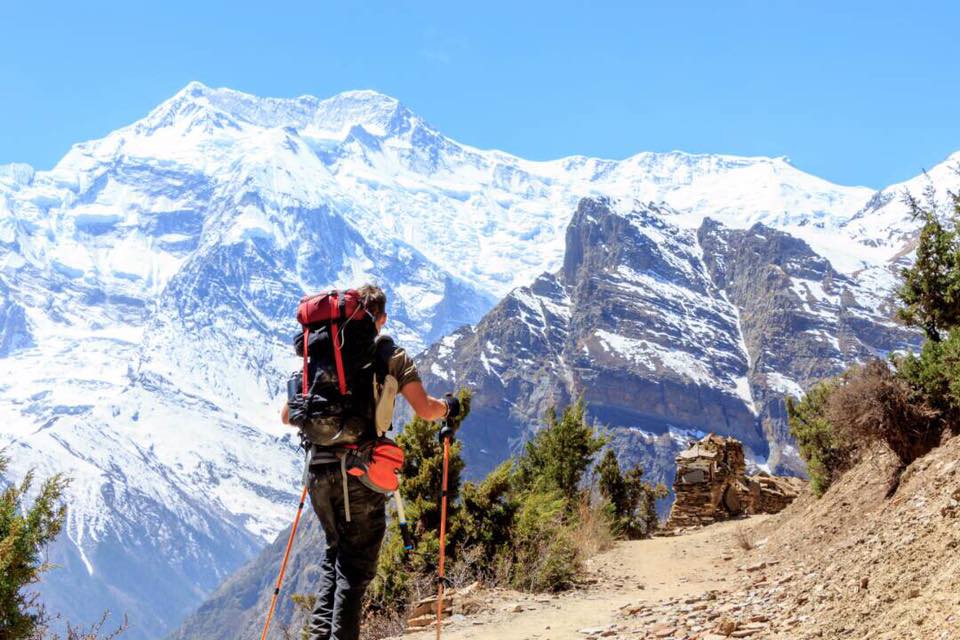
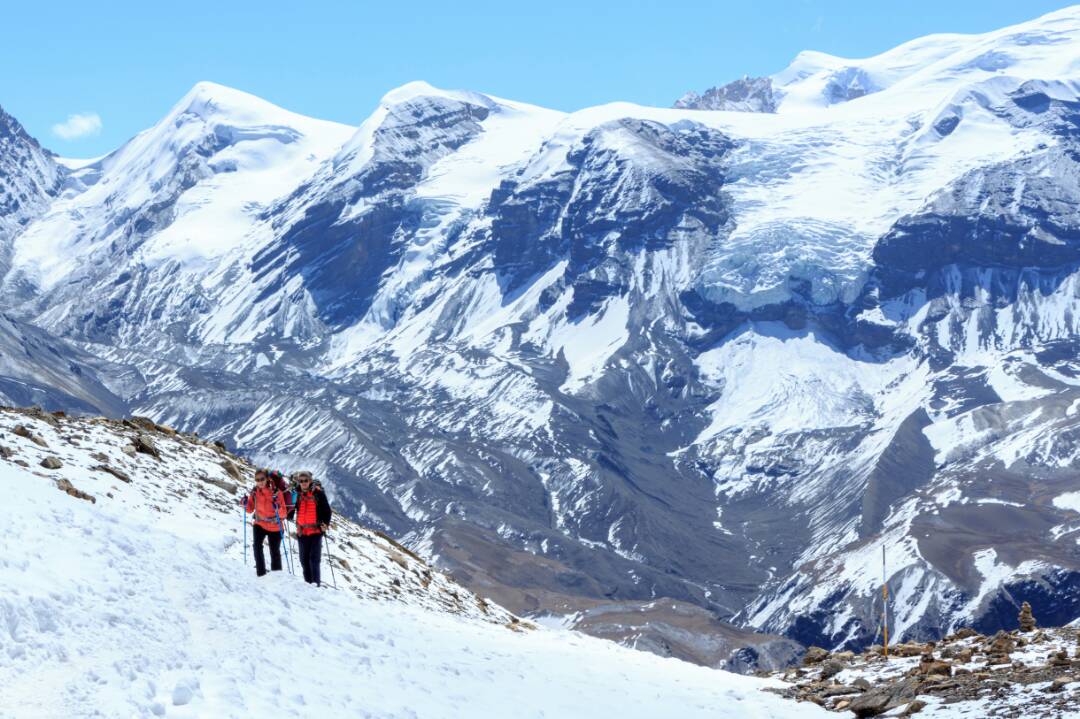
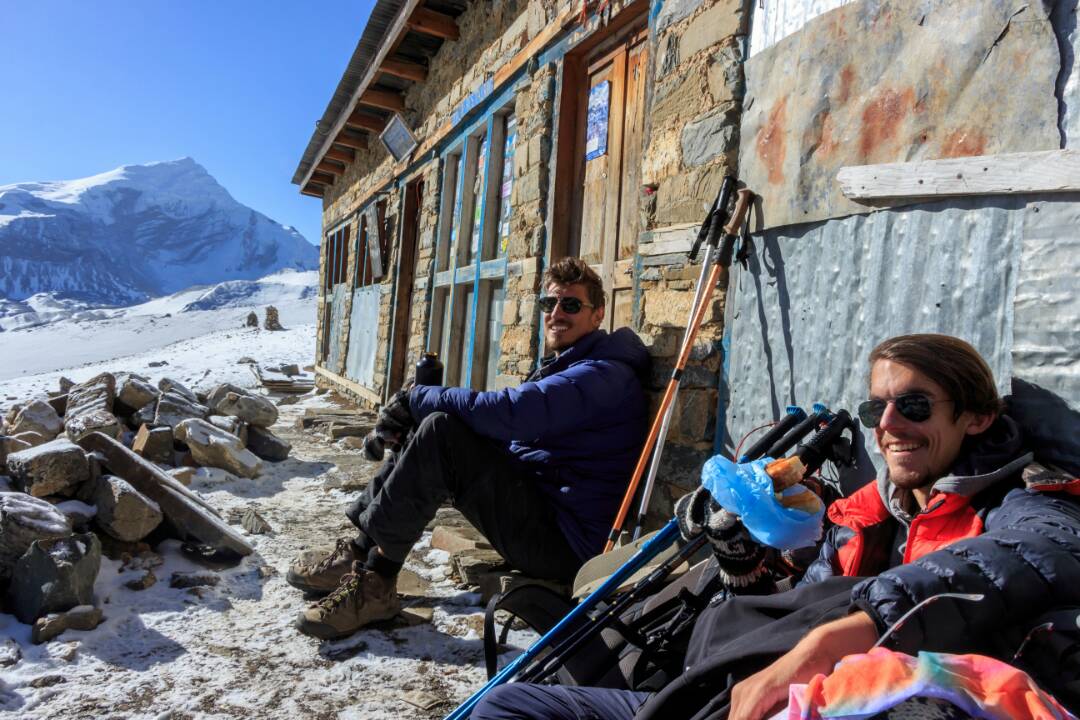
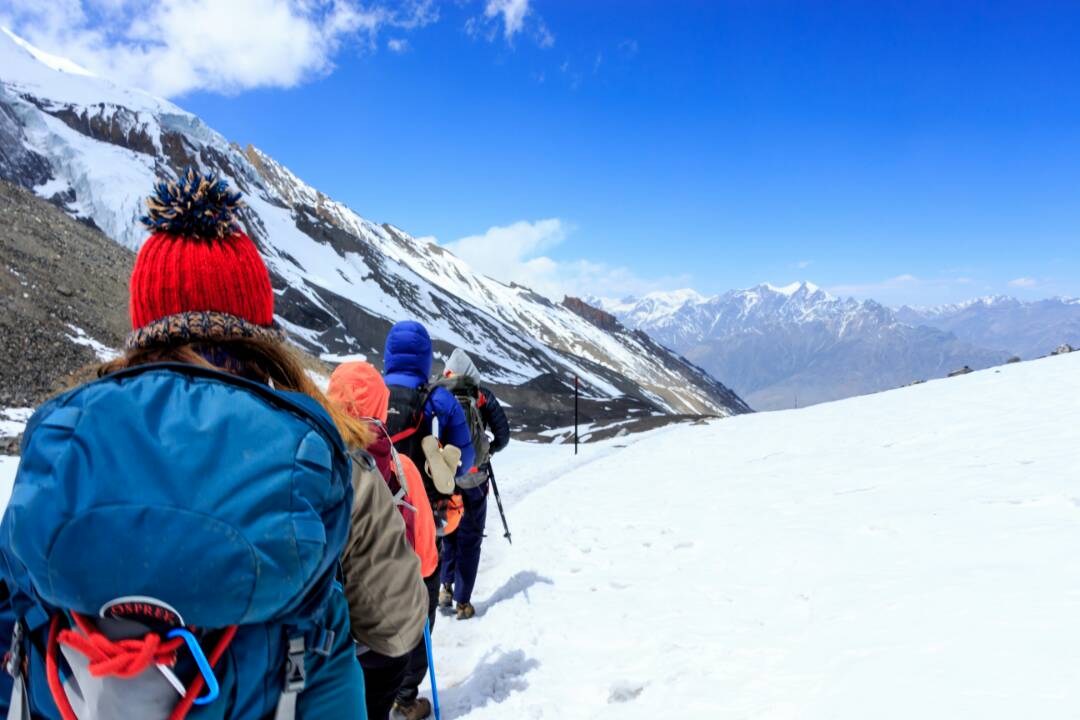
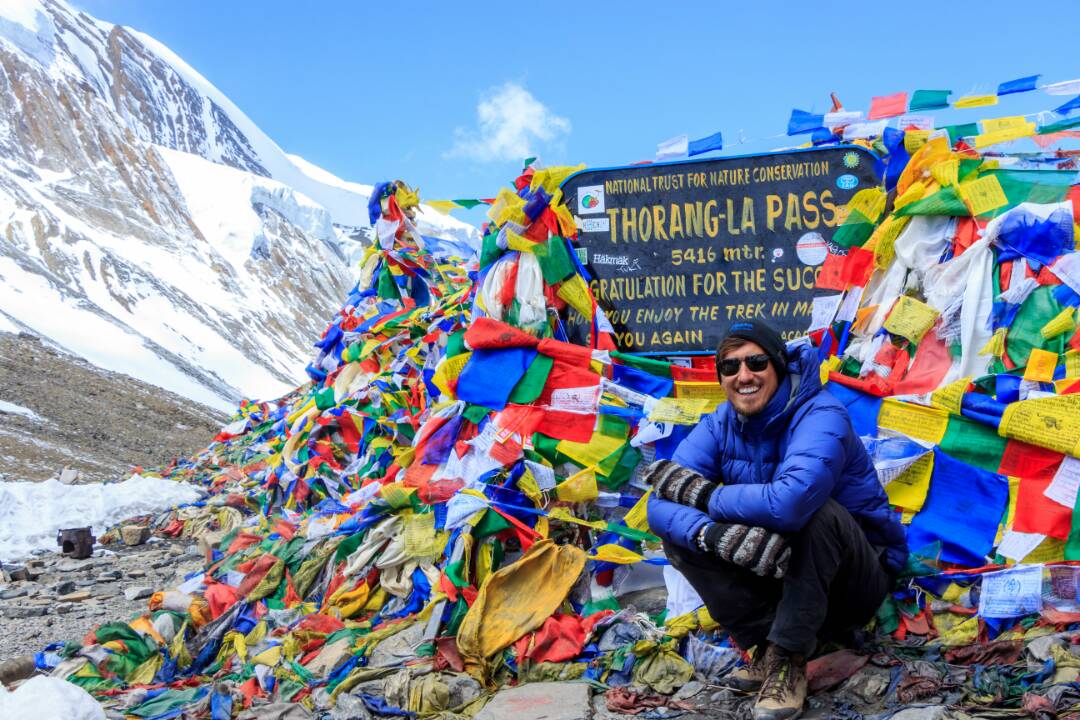

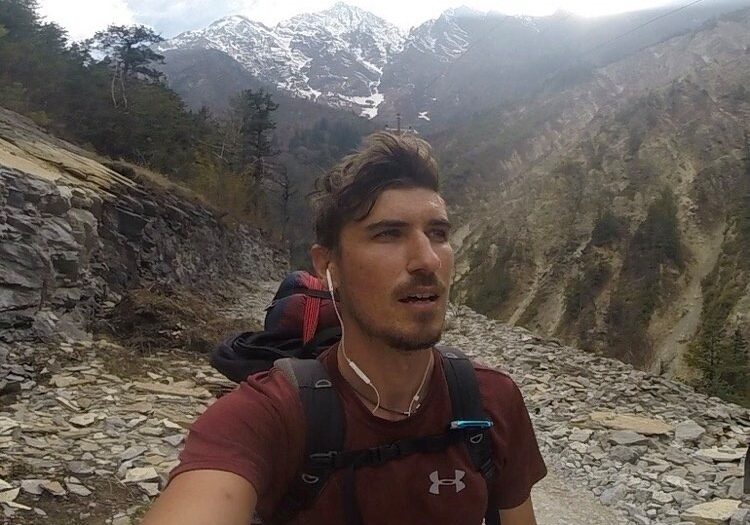
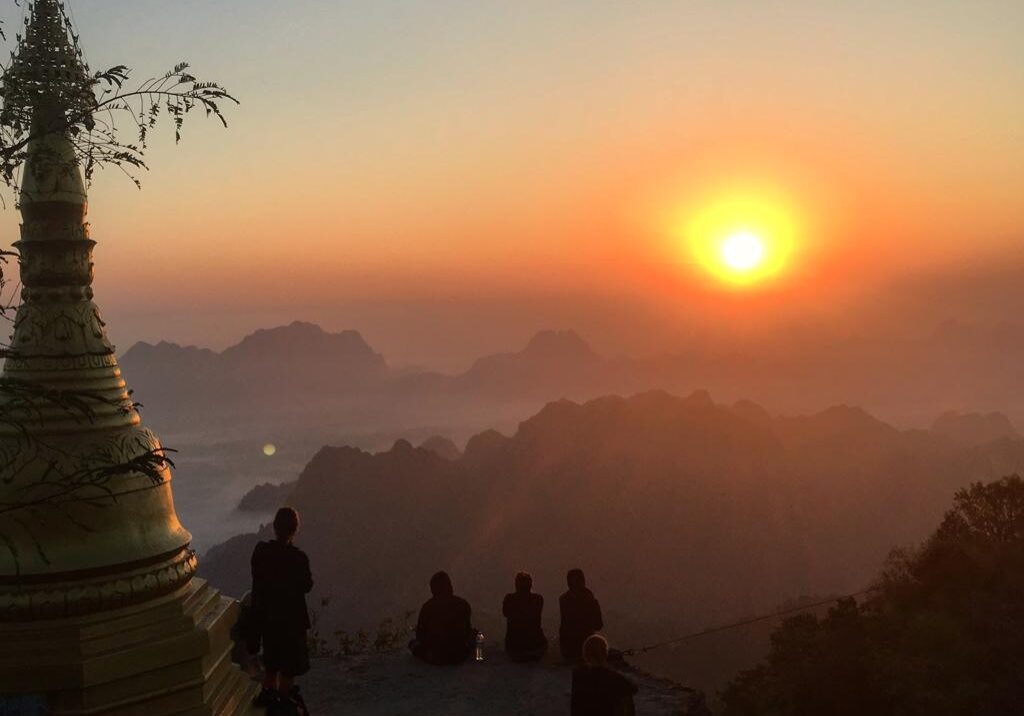
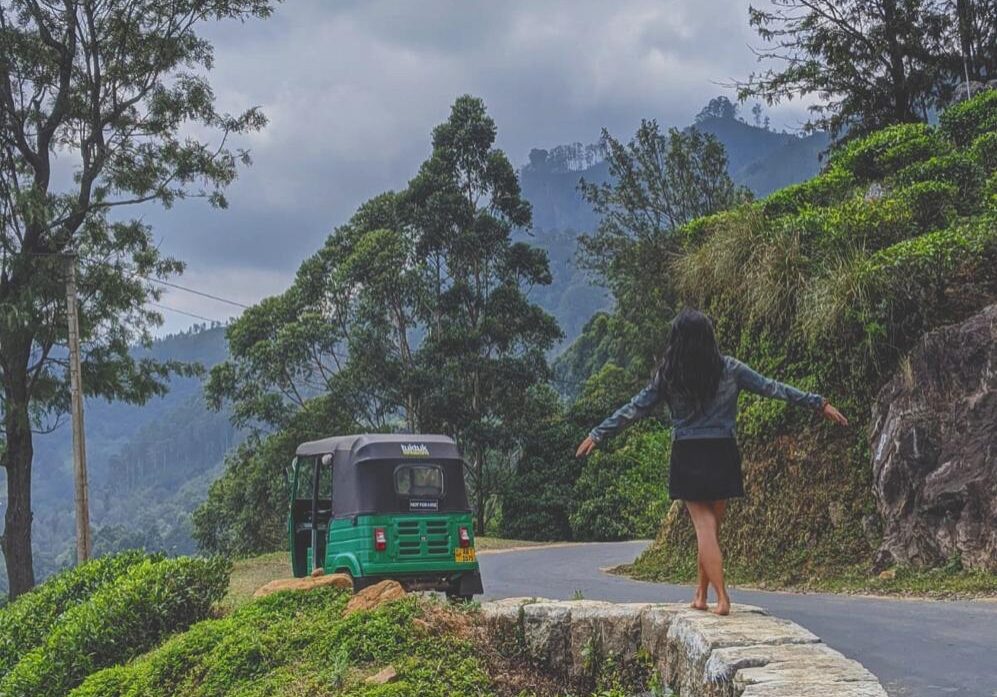
Fuyoo..it sure was a tough journey that you have been thru. Congratulation that you made it till the end. It could be very frustrating had you not made itvtill the summit after the difficulties that you have gone true. I bet the chai helped a lot.
Thank you!
My body wanted to turn back, but my mind wouldn’t let me. Luckily, I was so close to the summit at that point.
And yes, the chai absolutely helped!